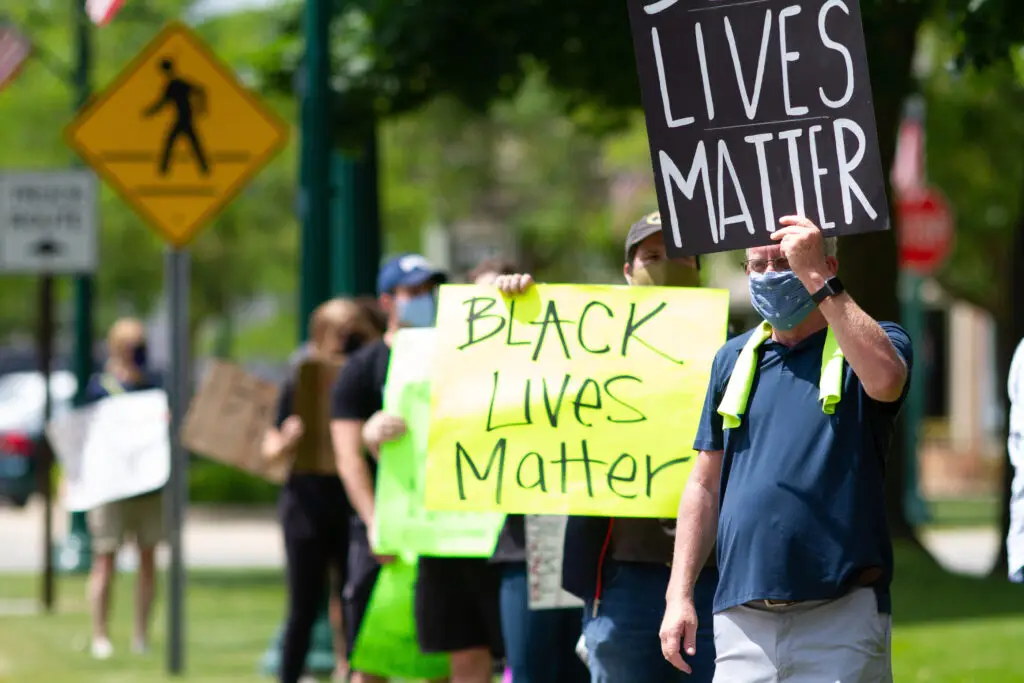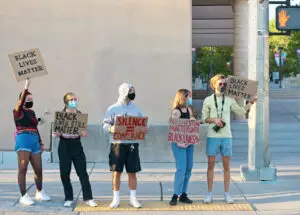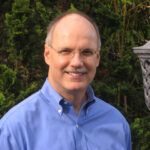Part 1 in this series introduced BLM and framed the issue facing Christians regarding calls to endorse its cause (if not the organization). Part 2 takes a deep dive into the self-professed guiding principles and beliefs behind BLM. Part 3 will further assess the question of BLM facing Christians and evaluate how some evangelical leaders have approached said question.
‘What We Believe’
We will now ignore any further analysis about the character and result of BLM protests, etc. Only the statement of belief of the organization itself will be in focus here. The opening paragraphs are relatively innocuous. Most of it merely recounts the history of the movement from Ferguson onward (see Part 1). Then we come to it.
Black Positionality
“We are unapologetically Black in our positioning. In affirming that Black Lives Matter, we need not qualify our position.”
This may be the easiest portion of the whole statement to skip over. On first blush, it seems to merely be espousing BLM’s constituency. It is patently obvious, given the name of the organization, that such would be black.
The two sentences both use the word “position” (or “positioning”) in a curious way. What does it mean to have a “positioning” or to “position” oneself in this context? The usage is curious because the word is not being employed in the common way. It is, rather, accompanied by the meaning given to it by critical theorists.[1] Uncovering the true meaning of positionality is key to understanding the thought patterns behind proponents of Critical Social Justice generally and BLM in particular.
In critical theory disciplines, “positionality”[2] is “the notion that personal values, views, and social location in time and space influence how one understands the world.”[3] Importantly, “people are defined not in terms of fixed identities, but by their location within shifting networks of relationships.”[4] Gender, race, class, etc. are “indicators of social and spatial positions.” Put another way, positionality is “a concept that acknowledges that we are all raced, classed, and gendered, and that these identities are relational, complex, and fluid positions rather than essential qualities”[5]
As some readers may have gathered, positionality is intricate to, or rather, necessary for, intersectionality.[6] James Lindsay has helpfully explained, “positionality is the foundation for praxis for intersectionality.” “Praxis” encompasses thought or reflection (see below) and action. I’ve said before that intersectionality is the linchpin of CRT; the mid-level theory that brings high-level insights to the ground level. In a similar way, the concept of positionality is necessary to make intersectionality tick. In turn, “reflexivity,” covered later, is works hand-in-glove with positionality.
More to the point, the position of a person within this paradigm defines their status as either privileged or oppressed, the only real identity designation that does any work in critical theories, along various axes of domination. In America, all positionality is thought to be “racialized,” “gendered,” and socially/contextually contingent.
These “positions,” then, “act on the knowledge a person has about things, both material and abstract.”
The necessary conclusion drawn by critical theorists (specifically critical race theorists) from this premise is that “knowledge is the product of a specific position that reflects particular places and spaces,” particular social location and experience in relation to given power dynamics in a racialized society.
Put tersely, the ability to know is determined by positionality. As Ozlem Sensoy and Robin DiAngelo make clear in their book, Is Everyone Really Equal?, “knowledge is dependent upon a complex web of cultural values, beliefs, experiences, and social positions.” Positionality is the “foundation” to examining knowledge and knowledge production.[7]
Due to these epistemic claims, positionality challenges notions of “value-free” truth claims that, in the minds of the theorists, “have dismissed human subjectivity from the processes that generate knowledge and identities.”[8] Like any calls to “decolonize” the curriculum— perhaps most exemplified by the “Rhodes Must Fall” initiative at Oxford— the calls to #ShutDownAcademia and #ShutDownSTEM are outgrowth of this— the renunciation of politically neutral research methodology and knowledge production in favor of “inclusive” ways of knowing which factor in, at all times, the positionality of all parties involved, and are judged accordingly. Notions of objectivity or common sense are dismissed as racist constructs created merely to marginalize black knowledge and knowledge production.
It is important here to grasp that domination, to critical race theorists, is not maintained primarily through physical barriers but rather through cultural—in this case white—hegemony. That is, whites, as the dominant group, form and control the norms, narratives, and values of society—to this we must add “knowledge” as well. Cultural elements are a matter of power dynamics, not objective truth.
As mentioned above, being conscious of one’s positionality is to interrogate the manifestations of the cultural hegemony and one’s relationship thereto. “Knowledge”—the only kind that matters to critical race theorists, that is, awareness of one’s social location—is derived from this exercise.
A person, whether oppressor or marginalized, is expected to attentively “engage” their positionality. They must constantly be aware of how they oppress and how they are oppressed and attempt to determine the “impact” of such. That is, how they are situated in relation to the relative power dynamics and how said power dynamics affect their knowledge and assumptions. The willingness, particularly of whites and males, to identify, admit, and lament one’s unconscious biases is a badge of honor and allyship (the only acceptable vocation for oppressors) in the woke community. Positionality must be “named.”[9] To fail to recognize this is to not be critically conscious (i.e. woke). Critical consciousness is a sort of blend of standpoint epistemology and “lived experience,” the two being not quite synonymous.
The central bias considered when discussing positionality has to do with how an oppressor (i.e. white, heteronormative, cisgender, male) is committing epistemic violence against marginalized persons by, intentionally or not, disregarding and thus devaluing their experiential truth claims, and therefore their unique status as knowers. In any case, critically conscious (or lived) experience is prized as the near singular path to knowledge and authority.
And like many of their Frankfurt school predecessors, critical race theorists believe that the only true knowledge is liberative knowledge. Paulo Freire makes clear in his classic, Pedagogy of the Oppressed, that the process of inquiry, learning, and education itself must be emancipatory. Knowledge is always socially constructed to benefit the knower and, therefore, never value-free. Knowledge is also power, as the old saying goes, but in this case, critical race theorists really mean it. Those in power determine what is true and ostracize any “knowledge” that would challenge their power status. Objectivity, free inquiry, and the like are cast by critical race theorists as tools of oppression because they cast out from the start alternative (experiential and felt) ways of knowing. It’s all a power play. Centering or promoting alternative ways of knowing is the path to liberation from predominant truth claims (i.e. myths) that prop up the hegemony.
Because the knowledge of the oppressed is derived from their experience as the oppressed, to reject the knowledge is to reject the person. And because of modern, therapeutic conceptions of the self, to reject or devalue a person is to do violence to them. For example, as Douglas Murray has often noted, being gay is no longer something someone does, but rather something they are. To denounce homosexuality is to denounce them as a person (i.e. de-person them). Those who dare to question knowledge derived from the positionality of an oppressed person will likely endure a barrage of accusations of committing “epistemic violence,” and the like. This is why any detractor will be cordially invited to “shut up and listen!”
Obviously, positionality asserts striking demands regarding epistemology and reality, methodology, and ethics— and a decidedly postmodern one, at that. And, in light of all this, it becomes clear that what the BLM statement is saying is that Black experiential knowledge is guiding their efforts over and against any other competing truth claims. Their policies and beliefs are derived from the positionality of black people, and it need not be justified by any other means. The requirement for white allies is diligent awareness of their own relative positionality as oppressors, the realization of which, ultimately, demands total acquiescence to the truth claims of the marginalized.
At the outset, BLM is not interested in open public discourse about race and society. Any opinions or solutions acquired from outside black positionality is per se irrelevant and, in fact, oppressive. BLM is also not really interested in justice, classically defined. Justice is unattainable without truth, and any stable conception of truth has long ago been discarded.
Dismantling Cisgenderism and Heteronormativity
“We are guided by the fact that all Black lives matter, regardless of actual or perceived sexual identity, gender identity, gender expression, economic status, ability, disability, religious beliefs or disbeliefs, immigration status, or location. We make space for transgender brothers and sisters to participate and lead. We are self-reflexive and do the work required to dismantle cisgender privilege and uplift Black trans folk, especially Black trans women who continue to be disproportionately impacted by trans-antagonistic violence.” [emphasis added]
This portion of the statement is more self-explanatory once the lingo therein is defined. BLM is making clear that they are “inclusive” to the nth degree. It is an intersectional movement, that is, one operating with the disposition of intersectionality in all things. The founders of BLM have distinguished their organization/movement from precursors by the fact that it is self-consciously intersectional. (It should be remembered that two of the three BLM founders identify as queer). Despite this, black trans activists have already criticized BLM for being insufficiently intersectional— a reminder that Critical Social Justice is inherently cannibalistic. To say “Black Lives Matter” is to encompass the litany of oppressed identity groups. Ibram Kendi has similarly extended his conception of “antiracism” to include antihomophobia, ani-transphobia, anti-Islamophobia, etc.
The corresponding goal to this inclusivity is the dismantling of cisgender privilege. The basic idea here is that the hegemony has been constructed around norms and narratives corresponding to the preferences of those who identity with the gender they were (biologically) assigned at birth. Under such a regime, gender-non-conforming-persons are oppressed; they are not the norm and their preferences and values are disregarded.
Heteronormativity, per BLM, must also be deconstructed and destroyed. Later the statement adds,
“We foster a queer‐affirming network. When we gather, we do so with the intention of freeing ourselves from the tight grip of heteronormative thinking, or rather, the belief that all in the world are heterosexual (unless s/he or they disclose otherwise).”
Heteronormativity is defined by the statement itself: it is the normalization of heterosexuality which allegedly results in the oppression of the non-heterosexuality.
Why does an organization dedicated to justice for black people care about the cisgender, heteronormative patriarchy? Because it is intersectional, and intersectional analysis directs us to examine oppression in the aggregate, for lack of a better word. Wherever oppression is, it must be stamped out.[10] Because intersectionality considers all identities as fluid and intersecting, and all oppression as mutually reinforcing, the presence of cisgenderism and heteronormativity are just as threatening as anti-black racism. All forms of oppression in our context work to reinforce the hegemony. As the Movement 4 Black Lives states in its policy platform, “Cisheteropatriarchy and ableism are central and instrumental to anti-Blackness and racial capitalism.”
Reflexivity
But what does it mean to be “self-reflexive”? Again, reflexivity is a term (which compliments, and works in tandem with, positionality) that could easily be passed over by the casual reader, but it is important to understand in order to understand BLM’s mission and practice.
Reflexivity, in this context, is to be critically reflective about how knowledge is generated and how power dynamics effect this process.[11] It is the critique of how we make sense of the world and how the world we are making sense of influences our making sense of it; the “Questioning the hidden preconceptions that orient social thought.” Pierre Bourdieu, whose presence looms large here, argued (in the context of sociology) that reflexivity— to make one’s “unconscious presuppositions explicit”— is essential to mastering thought and perception in order for persons to be transformed from objects of action into subjects of action. Only by laying bare biases can they be overcome. For Bourdieu, reflexivity offered liberation from the rigidity, false confidence, and bias of the “scholastic.” For contemporary critical theorists, especially those practicing CRT, reflexivity is repurposed for liberation from the confines of the social.[12]
In a revealing article called “Race and Reflexivity,” Mustafa Emirbayer and Matthew Desmond explain that on the most basic level, reflexivity is “the exercise of recognizing how aspects of one’s identity or social location [which are both contingent] can affect one’s vision of the social world,” and (especially) one’s “political imagination.”[13]
It is claimed that our assumptions, our social unconscious or “cultural baggage,” as its been called,[14] “preconstruct the objects of our inquiry,” even prior to inquiry. The inquirer (or the knower) is embedded in the very context he is investigating but not neutrally so. He is influenced, at the outset, by his social context and concomitant social unconscious, and cannot know things purely in a detached sense. Whatever is taken for granted, the given, is immediately suspect.
Accordingly, reflexivity, for critical race theorists, requires the acknowledgement that we live in a racialized society as embodied in our beliefs, norms, laws, and etc., which serve to reinforce racial power asymmetries. That is, that we all view the world through a racialized lens; that we are epistemically conditioned by the dominant, white cultural status quo. “[O]ur understanding of the racial order will forever remain unsatisfactory so long as we fail to turn our analytic gaze back upon ourselves, the analysts of racial domination, and inquire critically into the hidden presuppositions that shape our thought.” Put simply, reflexivity is the perpetual interrogation of our own assumptions and position within racialized structures of domination.
It must not be forgotten, though, that reflexivity is also an emancipatory process that challenges the purported neutral ways of knowing and the objective outcomes thereof. By doing so, the reflexive critic unveils the relative power dynamics of society and the hidden interrelation of power and knowledge, thus pulling the wool off his own eyes, as it were. Now he is free to be a subjectof knowledge, not merely an object of it, and thereby challenge existing power dynamics— a clearly political activity— by casting of the epistemic chains of illusion.
This process is constant and, as alluded to already, must be turned back on the inquirer or knower himself— his perceptions and assumptions— since he too is a part of the environment being examined. In other words, the knower must challenge his own ability to know, and, of course, must challenge his own possession of power and how this possession of power influences his inquiry. Round and round it goes.
Further still, since social reality is determined by the relative power dynamics, all knowledge is antagonistic (to other knowledge claims as well as ways of knowing) or dialectical. All knowledge and knowledge production are, therefore (like anything else), a proper object of critique. “What we know and how we know become the foci of scrutiny, along with an awareness of how relations of power are complicit in knowledge creation.”[15] The resultant conclusion is that all knowledge is totally contingent, contextual (or “situated”), and, frankly, untrustworthy because “[a]ll social knowledge, including critical theory, is embedded within the dialectics of social and historical change; it is thus intrinsically, endemically contextual.”[16] Clearly, reflexivity is confusing and confused; it is endlessly destabilizing, turning in on itself ad nauseum. What may disrupt the hegemony in one context by one actor may do the exact opposite in another.
For instance, Eduardo Bonilla-Silva and David G. Embrick explain (in the context of education) that because white educators are part of the dominant group and exist within the same racialized context as everyone else, they “must always attend to the roles they play in reproducing the current racial order.” Even committed antiracist educators “must remember that they work inside a racialized social structure that they are likely to reproduce.”[17] This is a call to be reflexive. Being “self-critical” is essential to developing education practices that can “change” the racial status quo, say Bonilla Silva and Embrick. The self-critical process involves learning from the oppressed (i.e. the students) rather than leading them (as the teacher). Only after a teacher (who must also be an activist) has proven themselves sufficiently self-critical will they be accepted as a “brother” or “sister” in the fight for “justice and equality.”[18]
In terms of moral valuation, the truthfulness and goodness of an act or belief is totally defined by the situation and actor or believer. No knowledge is objective. After all, objectivity is an oppressive construct that feigns neutrality in relation to existing power dynamics. BLM is committed to this perpetual self-interrogation and, in turn, divesting from the oppressive assumptions and perceptions discovered through constant critical reflection.
This means, for the tacit BLM supporter, that, among other things, even if you find BLM’s central cause righteous and timely it may not, by the admission of its leaders and organizers, be so for long. The cause— its positions, goals, and values— is unstable because its stated epistemology is unstable. Blanket affirmation of its goals is therefore unwise. They’re not even sure they know, for sure, what their goals are.
Patriarchy!!!
“We build a space that affirms Black women and is free from sexism, misogyny, and environments in which men are centered.”
In the crosshairs of this passage is patriarchy. As bell hooks explains, “Patriarchy is a political-social system that insists that males are inherently dominating, superior to everything and everyone deemed weak, especially females, and endowed with the right to dominate and rule over the weak and to maintain that dominance through various forms of psychological terrorism and violence.”[19]
Feminist theorists like Audre Lorde have long argued that racism and patriarchy are intricately intertwined systems of oppression. Intersectional analysis would affirm the same; gender inequalities affect how people experience racial inequalities as well, and vice a versa.
Viewers of the documentary By What Standard may have been puzzled as to why both the complementarian-egalitarian controversy and the goings on surrounding Resolution 9: “On Critical Race Theory and Intersectionality” were examined in tandem. Beyond the fact that both issues currently pervade the internal discourse of the SBC, the pairing was, from a critical race perspective, appropriate. Patriarchy and racism intersect and reinforce one another in favor of white males.[20] They will often be found together. That is why, in a distinctly intersectional fashion, the BLM statement focuses on black women in this clause.
Christians would and should combat and correct instances where men sinfully take advantage of their leadership status, whether in the family, church, or government context. Certain evangelical circles inordinately focus on the biblically ordained leadership role of men in the home and church. They not only push the model out into society writ large, demanding, for instance that women cannot be CEOs, but also over-emphasize the leadership of males in the home and church and minimize the concomitant requirement of servanthood and sacrifice. In short, they frustrate the Christ-like balance presented by the Pauline epistles on the subject. If bell hooks’ description above was real and not hyperbolic, and actually manifested in the church (as, indeed, in some cases it has), it should be condemned without qualification. A Christian need not be caught up in #MeToo to call the actions of Harvey Weinstein and the whole lot despicable.
But hooks and Lorde are not primarily talking about Weinstein, and neither is BLM. Rather, they have in view the whole of society, every institutional norm and value that places men in authority. Calls to dismantle the patriarchy are calls to disrupt norms that, up until yesterday (it seems), most Americans would have recognized as proper, or at least harmless. All— anything perceived to privilege men— are now deemed inherently and irreconcilably misogynistic and sexist. Most related to any calls for anti-patriarchal politics is the traditional nuclear family.
Family Feud
Most disturbing of all, for traditional Christians, is BLM’s vision for the family.
“We make our spaces family-friendly and enable parents to fully participate with their children. We dismantle the patriarchal practice that requires mothers to work ‘double shifts’ so that they can mother in private even as they participate in public justice work.
We disrupt the Western-prescribed nuclear family structure requirement by supporting each other as extended families and ‘villages’ that collectively care for one another, especially our children, to the degree that mothers, parents, and children are comfortable.”
I’ve mentioned before that the traditional, nuclear family, which has always been detested as an oppressive, white, capitalist construct by critical theorists, has recently come under more concentrated fire. The outbreak of COVID-19 was seized upon by people like Sophie Lewis (a self-described queer theorist and Marxist), the author of a book called Full Surrogacy Now which outlines in detail her case for abolishing the family altogether in favor of, shall we say, non-traditional alternatives. In an article for Open Democracy, Lewis argues that the inequalities presented by pandemic-related stay-at-home orders, which by her estimation assume private home ownership and nuclear family structure, prove the harmfulness of traditional family and home models.
Since not all people belong to a traditional family unit or own a home, orders from state governors to self-quarantine or work from home are literally dangerous to the underprivileged (especially trans and queer persons who occupy “chosen” families). Private property and the traditional family, and the underlying values that accompany both, should be abolished if health equity (i.e. eliminating all health disparities) is ever to be achieved.
Although conservative family structure is critiqued with increasing frequency by critical race scholars, it has historically been targeted by queer and feminist theory.[21] The reason why is obvious: family structure is attached to, and reinforces, sexual norms and gender presentation. Hence, queer theorists/activists have long seen the nuclear family of Beaver Cleaver as a key cultural myth of the straight, male hegemony, one that must be toppled if LGBTQ+ interests are to be furthered. Likewise, feminists of every wave have pointed to American expectations of home life as oppressive and inherently patriarchal. Hence, Lewis dubs the traditional domestic environment simply unsafe for “queer and feminized people.” It is a site of bigotry and abuse, period. “[E] ven when the private nuclear household poses no direct physical or mental threat to one’s person – no spouse-battering, no child rape, and no queer-bashing,” Lewis says, “the private family qua mode of social reproduction still, frankly, sucks. It genders, nationalizes and races us. It norms us for productive work. It makes us believe we are ‘individuals.'”
It must be noted that those theorists who attack the nuclear family from this perspective genuinely believe that it is a source of oppression, intolerance, abuse, and etc. But more importantly, the nuclear family is part of the larger hegemony and therefore can be charged with reinforcing all sorts of oppressive structures and institutions. The family is also often cited as a perpetuator of economic inequality, along race lines, because of the transference of generational wealth. “Family values” are also cast by critical scholars as dog whistle politics, code words for discrimination and maintenance of the status quo.
Perhaps worst of all, for critical scholars (especially the “experts” of critical pedagogy), the traditional, nuclear, Christian family is a hotbed of backward, bigoted opinions, a breeding ground for racism, misogyny, and the like. Breaking societal dependence on, and expectation of, the nuclear model is the first step in diminishing the bad influence of intolerant parenting.[22]
Although she is not a critical scholar, Elizabeth Bartholet’s cynicism (to put it nicely) of homeschooling— especially Christian homeschooling— has much in common with the views of education and family structure of critical race theorists and critical pedagogists. For Bartholet and critical theorists, the family is a rather dangerous place. Max Horkheimer dubbed the middle-class “good family” an “aristocratic,” “feudal institution” that was “thoroughly irrational” and hierarchical, and, therefore, oppressive— worthy of abolishment.[23] Horkheimer’s progeny have not strayed far in their opinions.
[1] Most often, the term is featured in discussions about unconscious bias in academic research, especially in critical pedagogy and critical geography, but also critical disability studies (a chillingly Foucauldian discipline), literature. See e.g. H. Richard Milner IV, “Race, Culture, and Researcher Positionality: Working Through Dangers Seen, Unseen, and Unforeseen,” Educational Researcher, 36(7) (2007), pp. 388-400; Angel Lin, “Researcher Positionality,” in Research Methods in Language Policy and Planning: A Practical Guide, eds. Francis M. Hult and David Cassels Johnson (John Wiley & Sons, 2015).
[2] Sometimes called a “sitpoint,” see e.g. Dan Goodley and Sophie Smailes, “Positionalities,” Qualitative Methods in Psychology, 2 (2011), pp. 38-58.
[3] Luis Sánchez, “Positionality,” Encyclopedia of Geography, ed. Barney Warf (Sage Knowledge), available athttps://sk.sagepub.com/reference/geography/n913.xml.
[4] Francis A. Maher & Mary Kay Thompson Tetreault, The feminist classroom: Dynamics of gender, race, and privilege (Rowman & Littlefield, 2001), p. 164.
[5] R.J. Martin & Dawn M. Van Gunten, “Reflected identities: Applying positionality and multicultural social reconstructionism in teacher education,” Journal of Teacher Education, 53(1) (2002), pp. 44-54, 46.
[6] See e.g. Mark Chung Hearn, “Positionality, Intersectionality, and Power: Socially Locating the Higher Education Teacher in Multicultural Education,” Multicultural Education Review, 4(2) (2012), pp. 38-59.
[7] Ozlem Sensoy and Robin DiAngelo, Is Everyone Really Equal? An Introduction to Key Concepts in Social Justice Education (Teacher’s College Press, 2017), p. 29.
[8] Sanchez, “Positionality.”
[9] Sensoy and DiAngelo, Is Everyone Really Equal? p. 15.
[10] Per people like Charles Mills, “white supremacy” is a global problem. Mills, “Global White Supremacy,” in White Privilege: Essential Readings on the Other Side of Race (Worth, 2008), pp. 97-104.
[11] Heather D’Cruz, Philip Gillingham and Sebastian Melendez, “Reflexivity, its Meanings and Relevance
for Social Work: A Critical Review of the Literature,” British Journal of Social Work, 37 (2007), pp. 73-90.
[12] Nedim Karakayli, “Reading Bourdieu with Adorno: The Limits of Critical Theory and Reflexive Sociology,” Sociology, 38(2) (2004), pp. 351-368.
[13] Emirbayer and Desmond, “Race and reflexivity,” Ethnic and Racial Studies, 35(4) (2012), pp. 574-599.
[14] Emma Kowal, Hayley Franklin, and Yin Paradies, “Reflexive antiracism: A novel approach to diversity training,” Ethnicities, 13(3) (2013), pp. 316-337.
[15] D’Cruz, Gillingham, and Melendez, “Reflexivity,” p. 78.
[16] Neil Brenner, “What is critical urban theory?” City, 13(2-3) (2009), pp. 198-207.
[17] Bonill-Silva and Embrick, “Recognizing the Likelihood of Reproducing Racism,” in Everyday Antiracism: Getting Real About Race in School, ed. Mica Pollock (The New Press, 2008), pp. 334-335.
[18] See also Paul Kivel, “How White People Can Serve as Allies to People of Color in the Struggle to End Racism,” in White Privilege: Essential Readings on the Other Side of Racism, ed. Paula S. Rothenberg (Worth Publishers, 2008), pp. 59-167.
[19] bell hooks, The will to change: men, masculinity, and love (Washington Square Press, 2004), pp. 17-25 (arguing, inter alia, that “Patriarchy is the single most life-threatening social disease assaulting the male body and spirit in our nation.”).
[20] For example, Joe Feagin and Hernan Vera present becoming “egalitarian and antiracist” (emphasis added) as the end goal for white allies. “Confronting One’s Own Racism,” in White Privilege: Essential Readings on the Other Side of Racism (Worth Publishers, 2008), p. 153.
[21] See e.g. Valerie Lehr, Queer family values: Debunking the myth of the nuclear family (Temple University Press, 1999).
[22] See also Christin DePouw and Cheryl Matias, “Critical Race Parenting: Understanding Scholarship/Activism in Parenting Our Children,” Educational Studies, 52(3) (2016), pp. 237-259.
[23] Horkheimer, “Authoritarianism and the Family Today,” The Family: Its Function and Destiny, ed. Ruth Nanda Anshen (Harper & Brothers, 1949), pp. 359-374.

























